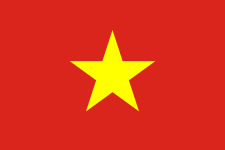Cen Land transforms into real estate developer with bold goals
Cen Land is shifting from brokerage to development, targeting a 170% revenue increase and 424% profit growth in 2025.




Unilever’s profit sharply jumped last year with the after-tax profit of roughly $165 million, up nearly 40% compared to 2016, thanks to strong revenue growth and steady cost control.

Entered into Vietnam in 1995, Unilever quickly became one of the largest consumer goods company here, quickly surpassing rivals such as P&G or Nestle. Unilever Vietnam marked a new turning point in 2017 when Nguyen Thi Bich Van becomes its first Vietnamese female president.
Van took hold of the company when its leading position was very stable. For more than two decades in Vietnam, Unilever had dominated almost all household products in the Vietnamese market.
According to a Kantar Worldpanel survey, in 2017, Unilever ranked first in the home and personal care products, which are two major categories of fast-moving consumer goods (FMCG).
Unilever’s strength comes from its ability to develop a broad distribution network that makes Unilever's products available nationwide, including hard-to-reach markets such as the uplands or remote areas.
Moreover, Unilever’s first year in the hands of its first Vietnamese female president also recorded impressive business results.
In the fiscal year 2017, Unilever achieved net sales of more than $1 billion, up 5 per cent compared with 2016 to reach a new peak. This figure was equivalent to the average growth of the whole FMCG sector of Vietnam.
A significant improvement in Unilever's business report is a steady cost control. Every year, Unilever has to spend a fortune on advertising and giving discounts to distributors.
In 2017, the company spent about $317.3 million on sales costs, which was equivalent to 2016. Thanks to steady cost control, Unilever witnessed a sharp jump in profits last year with the after-tax profit of roughly $165 million, up 40 per cent year-on-year.
Unilever appears to be strong in the current FMCG market in Vietnam. Global Insight forecasted that the average growth rate of Vietnam’s consumer market from 2011 to 2020 was the highest in Southeast Asia. The figure is about 8 per cent per year, much higher than Indonesia, Malaysia (5 per cent), or the Philippines, Thailand, Singapore (4 per cent).
A thriving market also grows competitors. At present, two strong rivals of Unilever in Vietnam are also foreign brands including P&G and Nestle. However, it is impossible to ignore the domestic enterprises, which have been rising strongly in recent years.
According to a Nielsen report, domestic firms in Vietnam were showing their impressive growth in the FMCG sector, with a 7 per cent growth rate in 2016, accounting for 42 per cent of the sector's revenue. Even in the home and personal care categories, which are initially a playground of foreign firms, domestic ones are also aggressively attacking with a growth rate of 13 per cent and 9 per cent respectively in 2016.Cen Land is shifting from brokerage to development, targeting a 170% revenue increase and 424% profit growth in 2025.
Menas Group has entered a strategic partnership with Keppel to co-develop an integrated ecosystem of lifestyle services across Keppel’s real estate projects in Vietnam, beginning with the landmark Celesta City development in Saigon South.
Phuc Sinh’s expansion underscores Vietnam’s growing role in sustainable agriculture and its increasing appeal to global investors
PVI Asset Management (PVI AM) and SonKim Capital (SK Capital), a business unit of SonKim Group has announced a strategic collaboration to develop innovative real estate investment products tailored for institutional investors and high-net-worth individuals.
Filum AI has successfully raised $1 million in funding despite a challenging venture capital market, underscoring the potential of AI and shifting investment strategies.
Enterprises are advised to promptly assess and evaluate the impact of the changes in the newly-issued to ensure timely compliance in the upcoming tax finalization period.